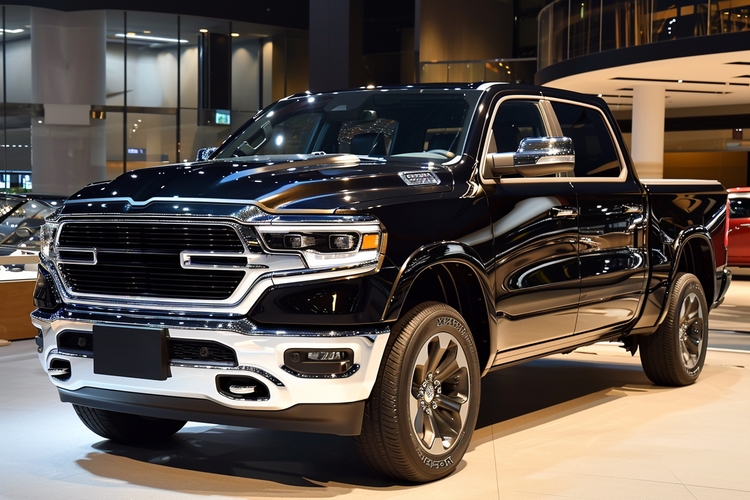Unveiling the Latest Prices for New Trucks in 2025
As the automotive industry evolves, the market for new trucks in 2025 presents consumers with innovative options across various price points. From work-ready pickups to luxury haulers, understanding the current pricing landscape helps potential buyers make informed decisions in an increasingly competitive market.

The truck market continues to evolve rapidly as manufacturers respond to changing consumer demands, technological advancements, and environmental regulations. For those considering a new truck purchase in 2025, staying informed about current pricing trends is essential for making a sound investment. This comprehensive overview examines the latest pricing structures across different truck segments, helping potential buyers understand what to expect when shopping for a new truck this year.
Understanding New Trucks 2025 Price Ranges
The 2025 truck market features distinct price tiers that correspond to different capabilities and features. Entry-level work trucks typically start around $35,000 to $42,000, offering basic utility features with fewer comfort amenities. Mid-range trucks, which balance work capability with everyday comfort, generally fall between $45,000 and $60,000. Premium and luxury truck models now regularly exceed $70,000, with fully-loaded flagship models approaching or surpassing $100,000. This price stratification reflects the growing diversity of truck buyers, from traditional work-focused customers to those seeking premium daily drivers with towing capabilities.
Factors Affecting New Trucks Costs in 2025
Several key factors influence truck pricing in 2025. Powertrain options remain a significant price determinant, with electric and hybrid variants commanding premiums of $8,000-$15,000 over traditional combustion engines. Advanced driver assistance systems (ADAS) have become more prevalent but still add $2,000-$5,000 to the base price depending on sophistication. Towing packages with integrated brake controllers, enhanced cooling systems, and specialized hitches typically add $1,500-$3,500 to the sticker price. Additionally, the ongoing semiconductor challenges continue to affect production costs, with manufacturers passing some of these expenses to consumers through reduced incentives rather than direct price increases.
New Trucks Comparison: Size Categories and Pricing
The truck market remains segmented by size, with each category serving different needs and price points. Compact trucks have gained popularity as urban-friendly options, with models priced between $28,000 and $40,000. Mid-size trucks offer increased capability while maintaining reasonable fuel efficiency, typically ranging from $35,000 to $55,000. Full-size light-duty trucks remain the market’s core, spanning from $40,000 work trucks to $85,000 luxury models. Heavy-duty trucks designed for serious towing and hauling start around $45,000 but commonly reach $75,000-$90,000 when equipped for maximum capability. Each segment has seen price increases of approximately 4-6% compared to previous model years.
Electric vs. Traditional New Trucks Prices
The electric truck segment has matured significantly in 2025, though pricing still reflects the technology’s relatively new position in the market. Entry-level electric trucks start around $50,000 before incentives, while premium electric models can exceed $110,000. Government incentives remain available but have decreased from previous years, now typically ranging from $3,500 to $7,500 depending on battery capacity and manufacturing location. Traditional combustion engine trucks maintain their price advantage at the entry level, though the total cost of ownership calculations have narrowed as electric models offer lower maintenance and operating costs. Hybrid options occupy the middle ground, typically commanding a $5,000-$8,000 premium over standard combustion models.
Popular Models and New Trucks Prices Comparison
The truck market features fierce competition across all segments, with manufacturers continuously adjusting features and pricing to attract buyers.
| Model | Category | Base MSRP | Mid-Trim | Premium Trim |
|---|---|---|---|---|
| Ford F-150 | Full-Size | $38,500 | $54,900 | $78,700 |
| Chevrolet Silverado | Full-Size | $37,900 | $52,500 | $72,300 |
| RAM 1500 | Full-Size | $39,200 | $55,800 | $74,600 |
| Toyota Tacoma | Mid-Size | $32,500 | $42,300 | $51,900 |
| Ford Maverick | Compact | $28,800 | $33,600 | $40,200 |
| GMC Sierra HD | Heavy-Duty | $47,500 | $63,700 | $89,500 |
| Rivian R1T | Electric | $67,500 | $82,300 | $97,800 |
| Ford F-150 Lightning | Electric | $54,900 | $72,400 | $93,700 |
Prices, rates, or cost estimates mentioned in this article are based on the latest available information but may change over time. Independent research is advised before making financial decisions.
Regional Variations in New Trucks Pricing
Truck prices vary significantly by region due to local demand, dealer inventory, and state-specific regulations. Coastal markets typically see higher prices for trucks, with premiums of 3-7% compared to central states. States with stricter emissions regulations may have higher prices for certain models due to required additional equipment. Rural areas with higher truck demand often maintain stronger pricing despite lower overall cost of living. Additionally, dealer supply constraints continue to affect regional pricing, with areas experiencing inventory shortages seeing fewer incentives and discounts. Potential buyers should research local market conditions and consider expanding their search radius to find the best value.
The 2025 truck market offers tremendous variety across different price points, with options available for virtually every need and budget. While prices have increased across all segments compared to previous years, the additional technology, capability, and features provide significant value for consumers. Prospective buyers should carefully consider their specific needs, research available options thoroughly, and test drive multiple models before making a purchase decision. As the market continues to evolve with new powertrain technologies and features, staying informed about pricing trends remains essential for making a sound truck investment.




